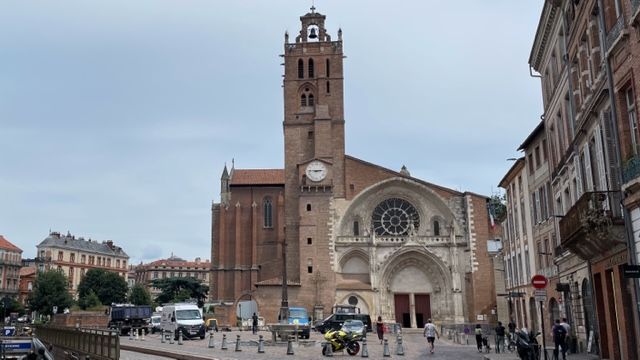Toulouse: La Ville Rose
- swmartin74
- Jun 13, 2023
- 3 min read

Due to a national day of strike action on 06 June we dropped Montpellier for the night of the 5th and took the train to Toulouse that day. It was one day earlier than planned, to avoid travelling on the strike day. Thankfully the Toulouse apartment was available for the extra day (giving us 4 nights in total), and the host was very reasonable, charging us a slightly cheaper rate than we were paying for the other nights.
The city’s nickname (as per title) comes from the pink/red colour of the stone used in most of the buildings, from the three-storey terraced apartments that front the random winding lanes to the grand public buildings that face the generous public squares. For this reason, and the aesthetic gift with which the French endow all architecture, it is a beautiful city.
Toulouse is also compact and liveable with an abundance of greenspace. You can see why it is a favourite destination for NZ rugby players taking their sabbaticals or retirement gigs. Also, Toulouse is France’s strongest rugby team, contributing more players to Les Bleus than any other club. We also heard occasional references to Toulouse being the strongest non-test team in the world – a ludicrous statement to the ears of a Crusaders supporter.
Again we mainly walked around to experience the town at a local level, while dodging maniacal cyclists and indifferent drivers. We checked out the Garonne River with its iconic Pont Neuf Bridge, browsed various markets and visited the three main cathedrals of the city, Cathédrale Saint-Etienne, the Jacobins Church, and the most impressive of the lot, Basilique of St Sernin. Whatever your spiritual leanings, these grand buildings are always worth a visit. They are cool and tranquil oases, particularly if you have been tramping around for hours in the midst of a European heatwave.
They represent the zenith of architectural expression and deep-dyed history of any civilisation, often thousands of years old and built over centuries. The Basilique had an impressive crypt with various religious relics and charnels. The church publicity mentions that it holds a genuine thorn from Christ’s crown of thorns. We couldn’t find it, but it would rank with many such relics conveniently found over the centuries when a particular institution needed a boost.
We took a boat trip on the Canal du Midi, which was relaxing and interesting for negotiating three locks. The clever engineering behind these means of changing levels along a canal (The Panama Canal has 12 of them, designed for oceangoing ships). Was perfected by that Renaissance genius Leonardo da Vinci.
We returned to town via the towpath of the Canal de Brienne, a beautiful and quiet pathway with overarching plane trees.
Almost every town in southern France has a Petite Train, a prissy, overpriced little tourist road train that locals would not be seen dead on. We finally gave into the temptation to ride one on our last day. It was a good way to take a load off, and re-cap with commentary all the sights we had previously visited on foot.
The bus to the airport was cancelled due to strikes (of course) which made it three disruptions in all this time round. Par for the course. Instead we took a cab with a nice driver who had that essential cabbie quality of impatience. He also made an apt one-word observation about the attitude of French cyclists and drivers after about the third near-miss of the journey: anarchy.

































Comments